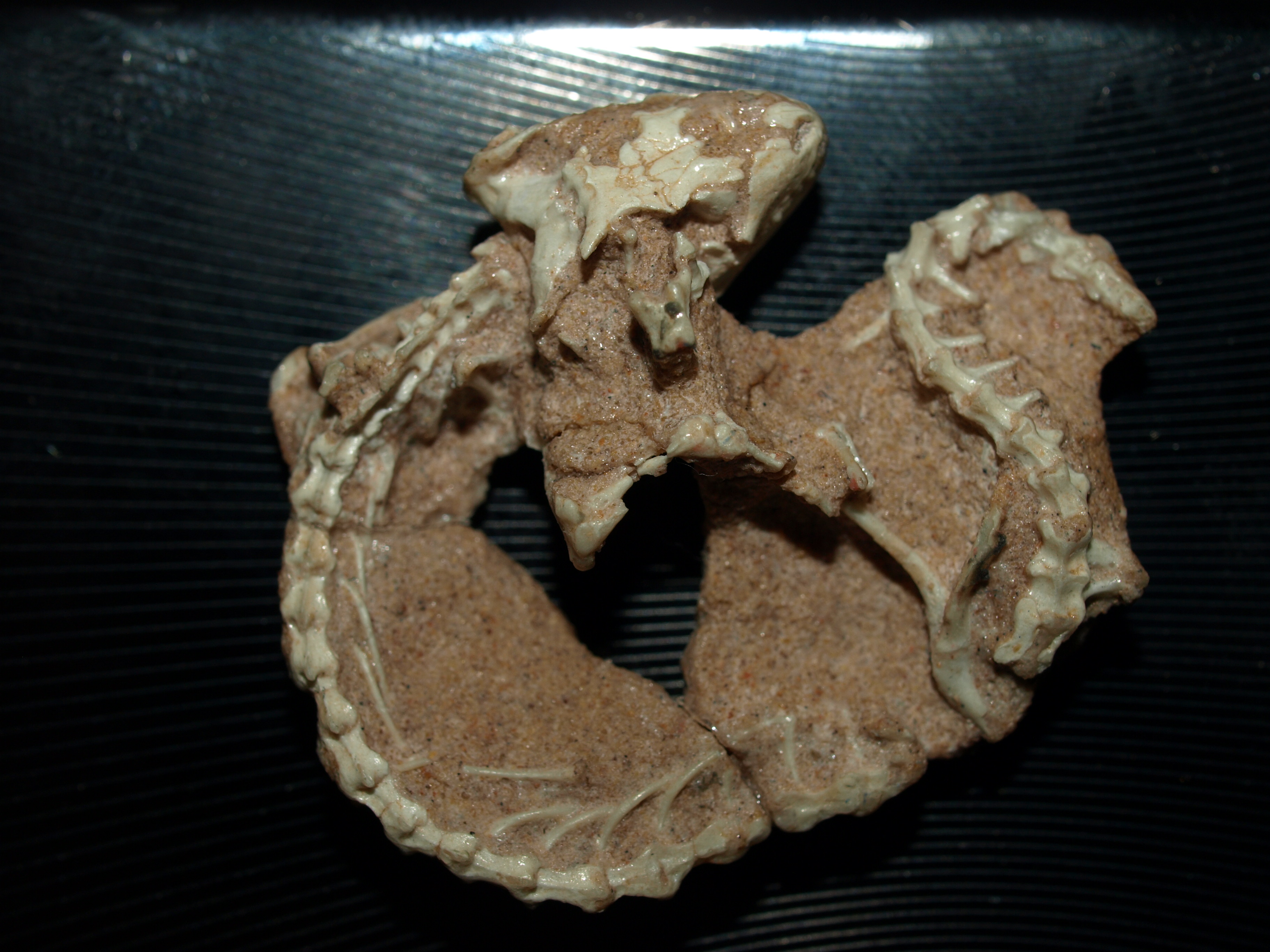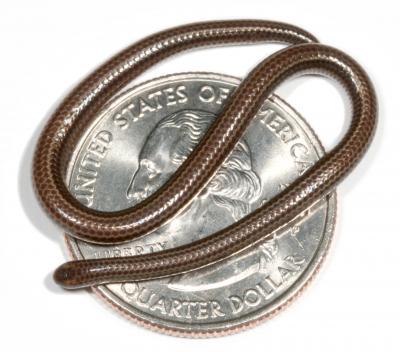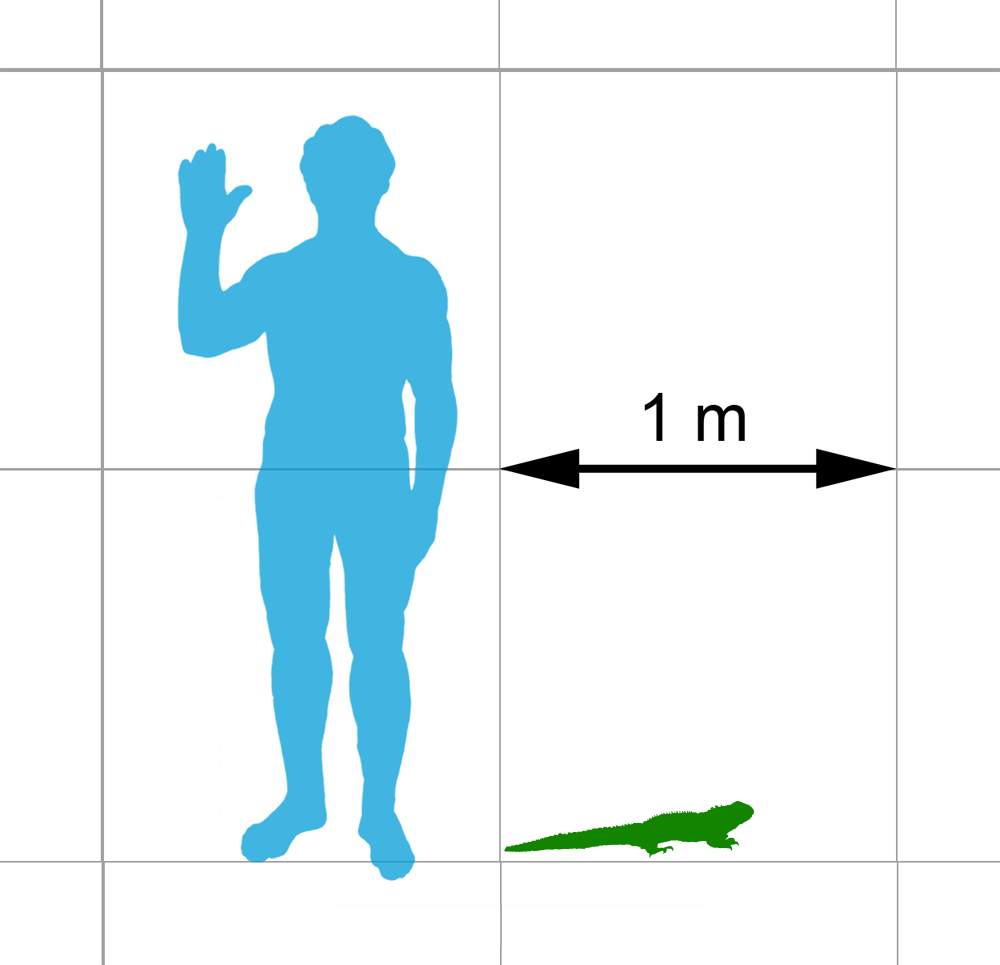|
Squamates
Squamata (, Latin ''squamatus'', 'scaly, having scales') is the largest order of reptiles; most members of which are commonly known as lizards, with the group also including snakes. With over 11,991 species, it is also the second-largest order of extant (living) vertebrates, after the perciform fish. Squamates are distinguished by their skins, which bear horny scales or shields, and must periodically engage in molting. They also possess movable quadrate bones, making possible movement of the upper jaw relative to the neurocranium. This is particularly visible in snakes, which are able to open their mouths very widely to accommodate comparatively large prey. Squamates are the most variably sized living reptiles, ranging from the dwarf gecko (''Sphaerodactylus ariasae'') to the reticulated python (''Malayopython reticulatus''). The now-extinct mosasaurs reached lengths over . Among other reptiles, squamates are most closely related to the tuatara, the last surviving member of ... [...More Info...] [...Related Items...] OR: [Wikipedia] [Google] [Baidu] |
Reptiles
Reptiles, as commonly defined, are a group of tetrapods with an ectothermic metabolism and Amniotic egg, amniotic development. Living traditional reptiles comprise four Order (biology), orders: Testudines, Crocodilia, Squamata, and Rhynchocephalia. About 12,000 living species of reptiles are listed in the Reptile Database. The study of the traditional reptile orders, customarily in combination with the study of modern amphibians, is called herpetology. Reptiles have been subject to several conflicting Taxonomy, taxonomic definitions. In Linnaean taxonomy, reptiles are gathered together under the Class (biology), class Reptilia ( ), which corresponds to common usage. Modern Cladistics, cladistic taxonomy regards that group as Paraphyly, paraphyletic, since Genetics, genetic and Paleontology, paleontological evidence has determined that birds (class Aves), as members of Dinosauria, are more closely related to living crocodilians than to other reptiles, and are thus nested among re ... [...More Info...] [...Related Items...] OR: [Wikipedia] [Google] [Baidu] |
Mosasauria
Mosasauria is a clade of aquatic and semiaquatic squamates that lived during the Cretaceous period. Fossils belonging to the group have been found in all continents around the world. Early mosasaurians like dolichosaurs were small long-bodied lizards that inhabited nearshore coastal and freshwater environments; the Late Cretaceous saw the rise of large marine forms, the mosasaurids, which are the clade's best-known members. The clade is defined as all descendants of the last common ancestor of the mosasaur '' Mosasaurus hoffmannii'' and dolichosaurs '' Dolichosaurus'', '' Coniasaurus'', and '' Adriosaurus suessi''. Its placement within the squamate tree is highly controversial. Two prominent hypotheses include the varanoid hypothesis, which holds that mosasaurians are most closely related to monitor lizards, and the pythonomorph hypothesis, which argues for a sister relationship with snakes. A third ophidiomorph hypothesis argues that snakes are members of the Mosasauria ... [...More Info...] [...Related Items...] OR: [Wikipedia] [Google] [Baidu] |
Lepidosauria
The Lepidosauria (, from Greek meaning ''scaled lizards'') is a Order (biology), superorder or Class (biology), subclass of reptiles, containing the orders Squamata and Rhynchocephalia. Squamata also includes Lizard, lizards and Snake, snakes. Squamata contains over 9,000 species, making it by far the most species-rich and diverse order of non-avian reptiles in the present day. Rhynchocephalia was a formerly widespread and diverse group of reptiles in the Mesozoic era, Mesozoic Era. However, it is represented by only one living species: the tuatara (''Sphenodon punctatus),'' a superficially lizard-like reptile native to New Zealand. Lepidosauria is a monophyletic group (i.e. a clade), containing all descendants of the Most recent common ancestor, last common ancestor of squamates and rhynchocephalians. Lepidosaurs can be distinguished from other reptiles via several traits, such as large Keratin, keratinous Scale (anatomy), scales which may overlap one another. Purely in the conte ... [...More Info...] [...Related Items...] OR: [Wikipedia] [Google] [Baidu] |
Dibamidae
Dibamidae or blind skinks is a family of lizards characterized by their elongated cylindrical body and an apparent lack of limbs. Female dibamids are entirely limbless and the males retain small flap-like hind limbs, which they use to grip their partner during mating. They have a rigidly fused skull, lack pterygoid teeth and external ears. Their eyes are greatly reduced, and covered with a scale. They are small insectivorous lizards, with long, slender bodies, adapted for burrowing into the soil. They usually lay one egg with a hard, calcified shell, rather than the leathery shells typical of many other reptile groups. The family Dibamidae has two genera, '' Dibamus'' with 23 species native to Southeast Asia, Indonesia, the Philippines, and western New Guinea and the monotypic '' Anelytropsis'' native to Mexico. Recent phylogenetic analyses place the dibamids as the sister clade to all the other lizards and snakes or classify them as sharing a common ancestor with the infraord ... [...More Info...] [...Related Items...] OR: [Wikipedia] [Google] [Baidu] |
Rhynchocephalia
Rhynchocephalia (; ) is an order of lizard-like reptiles that includes only one living species, the tuatara (''Sphenodon punctatus'') of New Zealand. Despite its current lack of diversity, during the Mesozoic rhynchocephalians were a speciose group with high morphological and ecological diversity. The oldest record of the group is dated to the Middle Triassic around 238 to 240 million years ago, and they had achieved global distribution by the Early Jurassic. Most rhynchocephalians belong to the group Sphenodontia ('wedge-teeth'). Their closest living relatives are lizards and snakes in the order Squamata, with the two orders being grouped together in the superorder Lepidosauria. Rhynchocephalians are distinguished from squamates by a number of traits, including the retention of rib-like gastralia bones in the belly, as well as most rhynchocephalians having acrodont teeth that are fused to the crests of the jaws (the latter also found among a small number of modern lizard grou ... [...More Info...] [...Related Items...] OR: [Wikipedia] [Google] [Baidu] |
Toxicofera
Toxicofera (Latin for "toxin-bearers") is a proposed clade of squamata, scaled reptiles (squamates) that includes the snake, Serpentes (snakes), Anguimorpha (monitor lizards, Helodermatidae, beaded lizards, and alligator lizards) and Iguania (iguanas, Agama (lizard), agamas, and chameleons). Toxicofera contains about 4,600 species (nearly 60%) of extant taxon, extant Squamata. It encompasses all Venom (poison), venomous reptile species, as well as numerous related non-venomous species. There is little morphological evidence to support this grouping; however, it has been recovered by all molecular analyses as of 2012. Cladistics Toxicofera combines the following groups from traditional Scientific classification, classification: * Suborder Serpentes (snakes) * Suborder Iguania (iguanas, agamid lizards, chameleons, etc.) * Suborder Anguimorpha, consisting of: ** Family Varanidae (monitor lizards) ** Family Lanthanotidae (earless monitor lizard) ** Family Anguidae (alligator lizard ... [...More Info...] [...Related Items...] OR: [Wikipedia] [Google] [Baidu] |
Anguimorpha
The Anguimorpha is a suborder of Squamata, squamates. The group was named by Fürbringer in 1900 to include all autarchoglossans closer to ''Varanus'' and ''Anguis'' than ''Scincus''. These lizards, along with iguanians and snakes, constitute the proposed "venom clade" Toxicofera of all venomous reptiles. Evolution The oldest widely accepted member of Anguimorpha is ''Dorsetisaurus'' from the Late Jurassic of Europe and North America. In 2022, the genus ''Cryptovaranoides'' was described from the latest Triassic (Rhaetian) of England. ''Cryptovaranoides'' was recovered in the study as a crown-group anguimorph, and therefore the oldest crown group-squamate, 35 million years older than any previously known crown-group squamate. However, a 2023 study found that ''Cryptovaranoides'' most likely represents an Archosauromorpha, archosauromorph that was only distantly related to squamates. Families Anguidae There are 9 genera found within the Anguidae family. They are characteriz ... [...More Info...] [...Related Items...] OR: [Wikipedia] [Google] [Baidu] |
Lizard
Lizard is the common name used for all Squamata, squamate reptiles other than snakes (and to a lesser extent amphisbaenians), encompassing over 7,000 species, ranging across all continents except Antarctica, as well as most Island#Oceanic islands, oceanic Archipelago, island chains. The grouping is Paraphyly, paraphyletic as some lizards are more closely related to snakes than they are to other lizards. Lizards range in size from chameleons and geckos a few centimeters long to the 3-meter-long Komodo dragon. Most lizards are quadrupedal, running with a strong side-to-side motion. Some lineages (known as "legless lizards") have secondarily lost their legs, and have long snake-like bodies. Some lizards, such as the forest-dwelling ''Draco (genus), Draco'', are able to glide. They are often Territory (animal), territorial, the males fighting off other males and signalling, often with bright colours, to attract mates and to intimidate rivals. Lizards are mainly carnivorous, often b ... [...More Info...] [...Related Items...] OR: [Wikipedia] [Google] [Baidu] |
Snake
Snakes are elongated limbless reptiles of the suborder Serpentes (). Cladistically squamates, snakes are ectothermic, amniote vertebrates covered in overlapping scales much like other members of the group. Many species of snakes have skulls with several more joints than their lizard ancestors and relatives, enabling them to swallow prey much larger than their heads ( cranial kinesis). To accommodate their narrow bodies, snakes' paired organs (such as kidneys) appear one in front of the other instead of side by side, and most only have one functional lung. Some species retain a pelvic girdle with a pair of vestigial claws on either side of the cloaca. Lizards have independently evolved elongate bodies without limbs or with greatly reduced limbs at least twenty-five times via convergent evolution, leading to many lineages of legless lizards. These resemble snakes, but several common groups of legless lizards have eyelids and external ears, which snakes lack, althoug ... [...More Info...] [...Related Items...] OR: [Wikipedia] [Google] [Baidu] |
Serpentes
Snakes are elongated limbless reptiles of the suborder Serpentes (). Cladistically squamates, snakes are ectothermic, amniote vertebrates covered in overlapping scales much like other members of the group. Many species of snakes have skulls with several more joints than their lizard ancestors and relatives, enabling them to swallow prey much larger than their heads (cranial kinesis). To accommodate their narrow bodies, snakes' paired organs (such as kidneys) appear one in front of the other instead of side by side, and most only have one functional lung. Some species retain a pelvic girdle with a pair of vestigial claws on either side of the cloaca. Lizards have independently evolved elongate bodies without limbs or with greatly reduced limbs at least twenty-five times via convergent evolution, leading to many lineages of legless lizards. These resemble snakes, but several common groups of legless lizards have eyelids and external ears, which snakes lack, although this rule ... [...More Info...] [...Related Items...] OR: [Wikipedia] [Google] [Baidu] |
Quadrate Bone
The quadrate bone is a skull bone in most tetrapods, including amphibians, sauropsids ( reptiles, birds), and early synapsids. In most tetrapods, the quadrate bone connects to the quadratojugal and squamosal bones in the skull, and forms upper part of the jaw joint. The lower jaw articulates at the articular bone, located at the rear end of the lower jaw. The quadrate bone forms the lower jaw articulation in all classes except mammals. Evolutionarily, it is derived from the hindmost part of the primitive cartilaginous upper jaw. Function in reptiles In certain extinct reptiles, the variation and stability of the morphology of the quadrate bone has helped paleontologists in the species-level taxonomy and identification of mosasaur squamates and spinosaurine dinosaurs. In some lizards and dinosaurs, the quadrate is articulated at both ends and movable. In snakes, the quadrate bone has become elongated and very mobile, and contributes greatly to their ability to swallow ... [...More Info...] [...Related Items...] OR: [Wikipedia] [Google] [Baidu] |
Tuatara
The tuatara (''Sphenodon punctatus'') is a species of reptile endemic to New Zealand. Despite its close resemblance to lizards, it is actually the only extant member of a distinct lineage, the previously highly diverse order Rhynchocephalia. The name is derived from the Māori language and means "peaks on the back". The single extant species of tuatara is the only surviving member of its order, which was highly diverse during the Mesozoic era. Rhynchocephalians first appeared in the fossil record during the Triassic, around 240 million years ago, and reached worldwide distribution and peak diversity during the Jurassic, when they represented the world's dominant group of small reptiles. Rhynchocephalians declined during the Cretaceous, with their youngest records outside New Zealand dating to the Paleocene. Their closest living relatives are squamates (lizards and snakes). Tuatara are of interest for studying the evolution of reptiles. Tuatara are greenish brown an ... [...More Info...] [...Related Items...] OR: [Wikipedia] [Google] [Baidu] |








